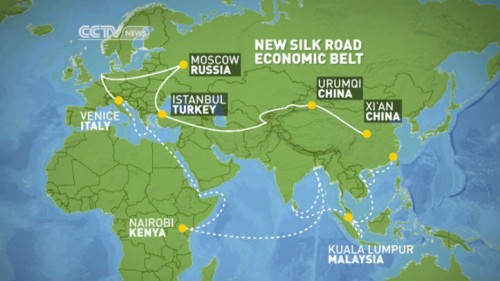Belt and Road Basics
Project Pengyou intern, Shani Cave helps break down the One Belt One Road Summit for Pengyous.

If you are tuned into world news, you’ve probably heard about the “Belt and Road” initiative already, but what exactly does it mean? Let us break it down for you.
The New Silk Road
The Belt and Road Initiative, otherwise known as One Belt, One Road (OBOR), has been likened to “China’s new Silk Road” and aims to revitalize the global economy and connect Europe and Asia through new infrastructure and transportation projects. This past weekend, leaders from 29 countries around the world came to Beijing to attend President Xi Jinping’s OBOR summit. At the end of the summit, President Xi pledged $124 billion to the project to “build an open platform of communication and uphold and grow an open world economy.”
The project consists of two parts: the Belt and the Road. The “Belt” refers to the land-based projects of the construction of physical roads and trade routes from China to Europe, while the “Road” refers to maritime roads that will connect China’s southern provinces with south-east Asia and Africa through ports and railways.
Building Global Partnerships
The Belt and Road initiative has already involved over 65 countries and garnered $3.1 trillion in projects under its banner. Not only will the project aid to increased trade, faster transit of goods, and greater international cooperation between China and other countries, it also fills in the gaps for infrastructure development in developing countries such as Afghanistan and Pakistan.
“No matter if they are from Asia and Europe, or Africa or the Americas, they are all cooperative partners in building the Belt and Road.” -President Xi Jinping.
White House advisor, Matt Pottinger, said the United States welcomes the Belt and Road Initiative in promoting infrastructure connectivity. In a statement from the U.S. Embassy in Beijing, Pottinger explained, “The United States recognizes the importance of improving economic connectivity through high-quality infrastructure development, and hence, welcomes efforts from all countries, including China, in achieving this.” Several U.S. firms and companies have already started investments into Chinese infrastructure to profit off of the Belt and Road Initiative.
The summit concluded with finance ministries from 27 countries, as well as China, approving the set of principles guiding the financial side of the project. We hope that this conference paves the way for further international cooperation between countries in developing a stable world economy.
If you have a minute, you should also check out some of the quirky videos that China Daily English has been producing promoting the initiative as well as this cool visual aid explaining the key points of the discussion. Still stumped? Check out Quartz’s great guide to the OBOR summit.
Sources: SupChina, South China Morning Post, Quartz, New York Times